![]()
As a prepper, being able to grow your own crops is a vital step towards becoming totally self-sufficient.
That being said, growing your crops and taking care of a garden is a lot easier said than done, especially when you have no experience, and it can be very easy to make crucial mistakes along the way.
Here are the top ten mistakes that preppers who are new to gardening will often make:
Not Providing Enough Water… or Too Much of It
Plants need water! And while most novice gardeners understand this, most severely underestimate the quantity and the consistency that plants need as well.
At the same time, overwatering plants can also be a serious problem because it can cause the roots to rot early.
The trick is to water your plants consistently according to their soil type, weather conditions, and the specific water needs of each plant (be sure to research this before you begin).
Forgetting About Pest Management
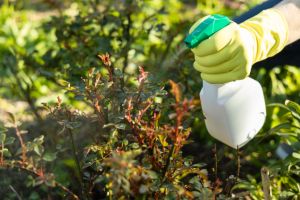 Nothing will be more disheartening when it comes to gardening than waking up one morning to find that your garden is faltering because of pests.
Nothing will be more disheartening when it comes to gardening than waking up one morning to find that your garden is faltering because of pests.
Pests, which can come as small rodents or insects or as large as deer, are are often considered the number one cause of garden failure.
That’s why you need to take proactive measures such as building a barrier around your garden to keep deer out, and investing in organic pest control methods that can keep smaller pests such as insects, slugs, or rodents at bay.
Ignoring the Health of the Soil
The health of your soil is crucial to the success of your garden, but it’s a factor that many preppers overlook. Poor soil quality can lead to nutrient deficiencies, water retention issues, and overall poor plant growth.
Before planting, take the time to test your soil’s pH and nutrient levels, and amend it as needed with organic matter, compost, and other soil amendments to create a healthy growing environment for your plants. You can learn here an easy way to test soil the way pioneers did, if you want to make sure your crops get all the necessary nutrients.
Overcrowding the Plants
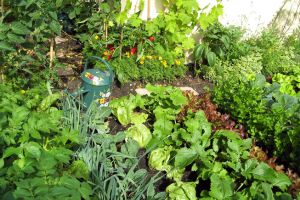 Another huge mistake that preppers can make in their gardens is overcrowding plants.
Another huge mistake that preppers can make in their gardens is overcrowding plants.
Yes, it can certainly be tempting to pack as many plants as possible into a small space to maximize yields, but overcrowding can lead to stunted growth, poor airflow, and increased susceptibility to pests.
Instead, give your plants plenty of room to grow by following spacing recommendations according to each plant.
Again, research the specific crops and plants that you plan on including in your garden before you begin the gardening process, and you’ll find out which plants do well around other plants or which ones need more space.
Overlooking Sunlight
Proper sunlight exposure is critical for plant growth and productivity, but it’s a factor that many preppers overlook when planning their survival gardens.
Planting sun-loving crops in shady areas or vice versa can result in poor yields and stunted growth.
Take the time to assess the sunlight exposure in your garden and select plant varieties that are well-suited to the available light conditions.
Over Fertilizing
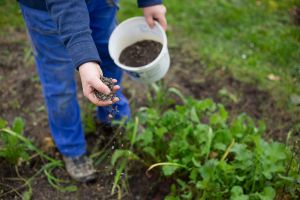 While fertilizing is essential for providing plants with the nutrients they need to thrive, over fertilizing can do more harm than good. Adding too much fertilizer to your garden will unfortunately lead to nutrient imbalances and root burn.
While fertilizing is essential for providing plants with the nutrients they need to thrive, over fertilizing can do more harm than good. Adding too much fertilizer to your garden will unfortunately lead to nutrient imbalances and root burn.
Related: How to Make Comfrey Fertilizer for an Extended Harvest
It will also be better for you to use organic fertilizers to promote healthy soil and plant growth without the risk of chemical runoff, which can be a major problem with most other fertilizers.
Skipping Mulching
Mulching is a simple yet effective technique for conserving soil moisture, suppressing weeds, and regulating soil temperature in your survival garden.
However, if you overlook this practice, it will leave your garden bed vulnerable to moisture loss and weed infestations.
Apply a layer of organic mulch, such as straw, wood chips, or compost, around your plants to retain moisture and suppress weeds in the process.
Not Pruning and Trimming
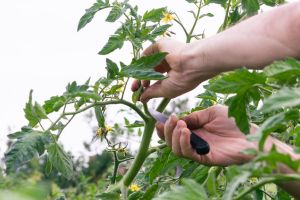 Pruning and trimming are essential gardening tasks for maintaining plant health, promoting airflow, and encouraging robust growth.
Pruning and trimming are essential gardening tasks for maintaining plant health, promoting airflow, and encouraging robust growth.
However, many preppers forget to prune and trim their plants, leading to overcrowding, disease susceptibility, and reduced yields.
Make sure you take the time to regularly prune dead or damaged branches, remove suckers, and thin out overcrowded areas to ensure healthy, productive plants in your garden.
Not Preparing Yourself for the Next Crop
Succession planting is when you plant new crops as soon as the last crop is harvested, allowing you to maximize yields and extend your growing season.
This is yet something else that many new gardens neglect as well, which leads to periods of downtime and reduced productivity.
Be sure to plan your garden layout with succession planting in mind by staggering your plantings to ensure a continuous supply of fresh produce throughout the growing season. This is key to becoming truly self-sufficient with your garden.
Having a survival garden is crucial for your preparedness strategy. Despite a well-stocked pantry, your ultimate resilience lies in getting really good at being self-sufficient, particularly in food production.
For those who are serious about surviving whatever comes their way, I strongly recommend this guide. It offers invaluable insights and practical advice for transforming your backyard into a self-sustaining homestead.
Remember, while stockpiling food serves as a temporary fix, learning how to grow your own food ensures you can keep going for the long haul.
You may also like:
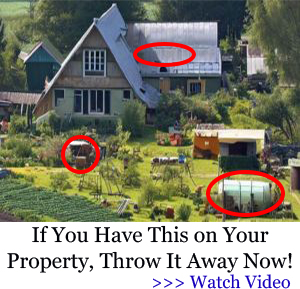 17 Items I Keep in My Fallout Shelter at All Times
17 Items I Keep in My Fallout Shelter at All Times
Whatever You Do, Don’t Chop Down This Backyard Plant (Video)
The Only Things That Preppers Should Know About Archery
Best States for Self-Defense. Do You Live in One of Them?
